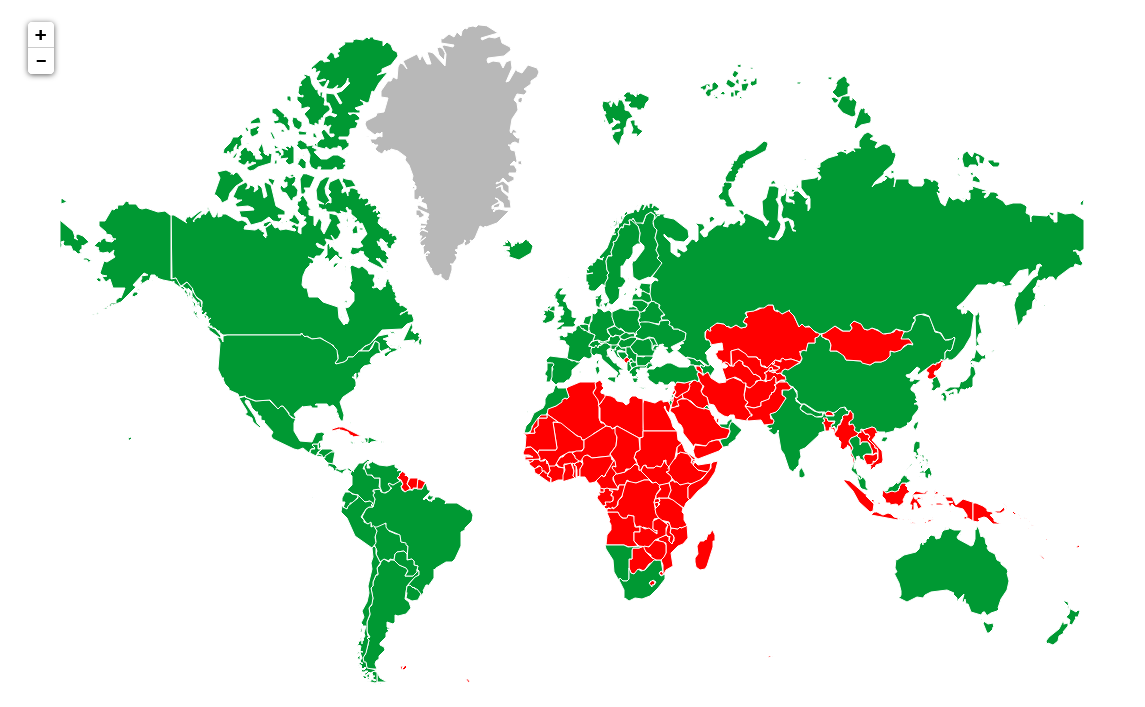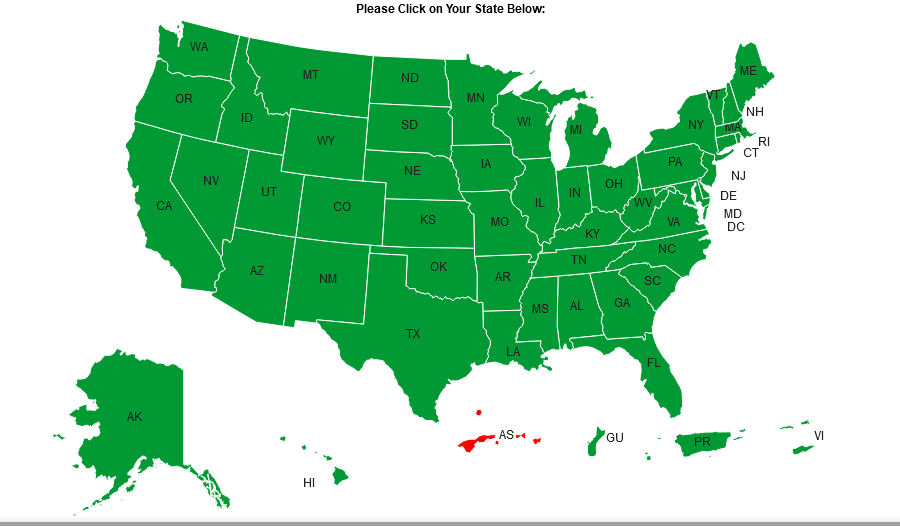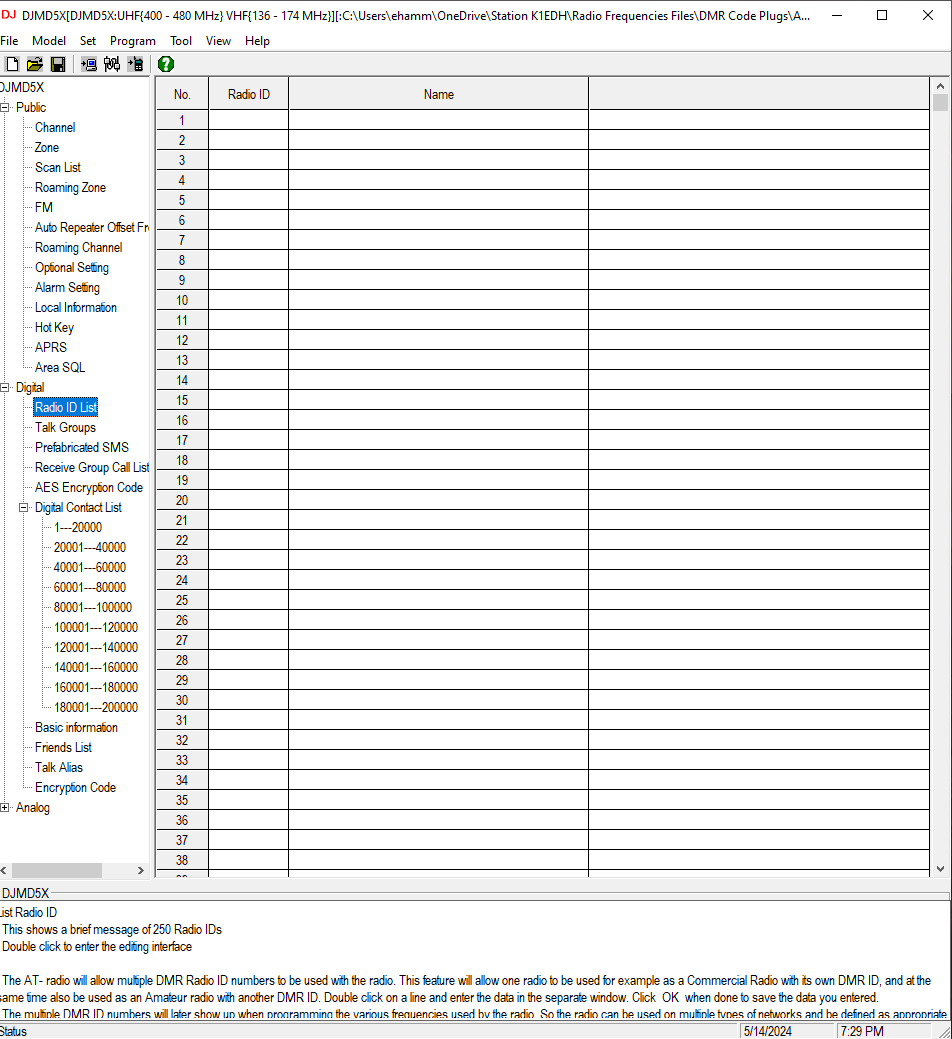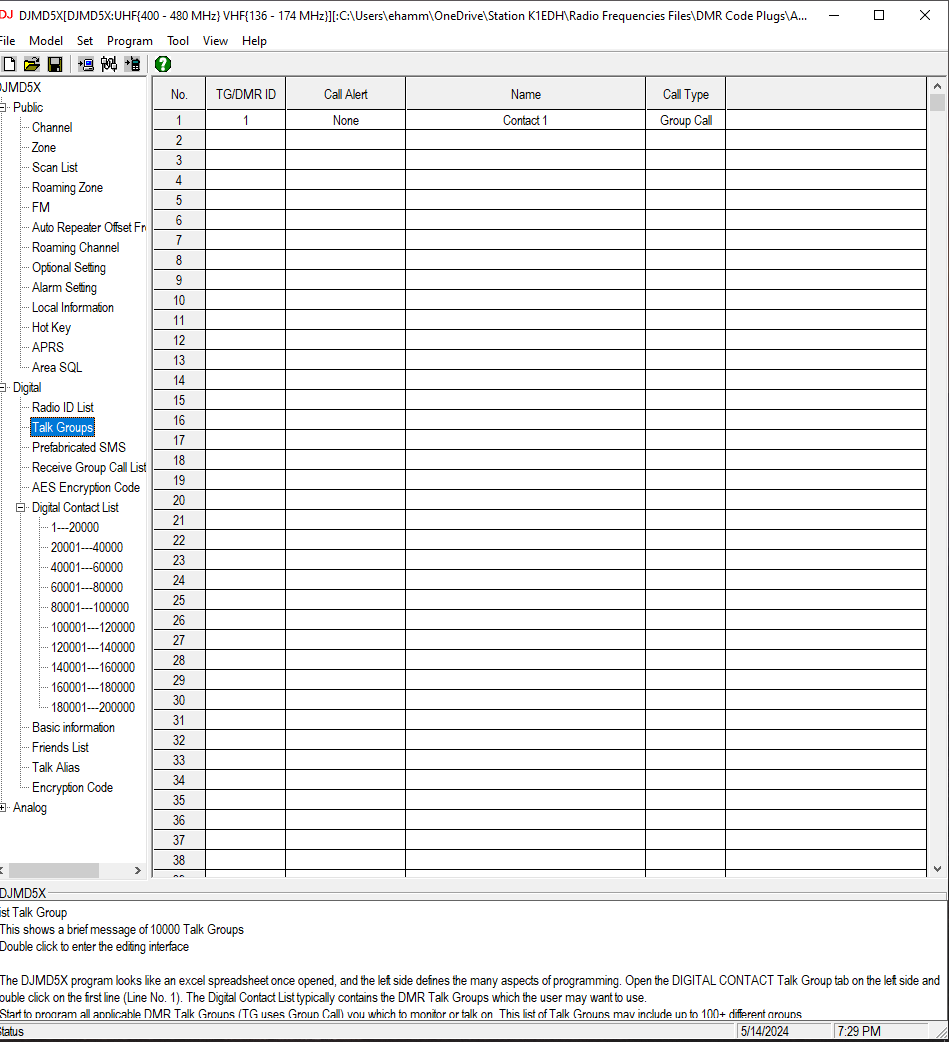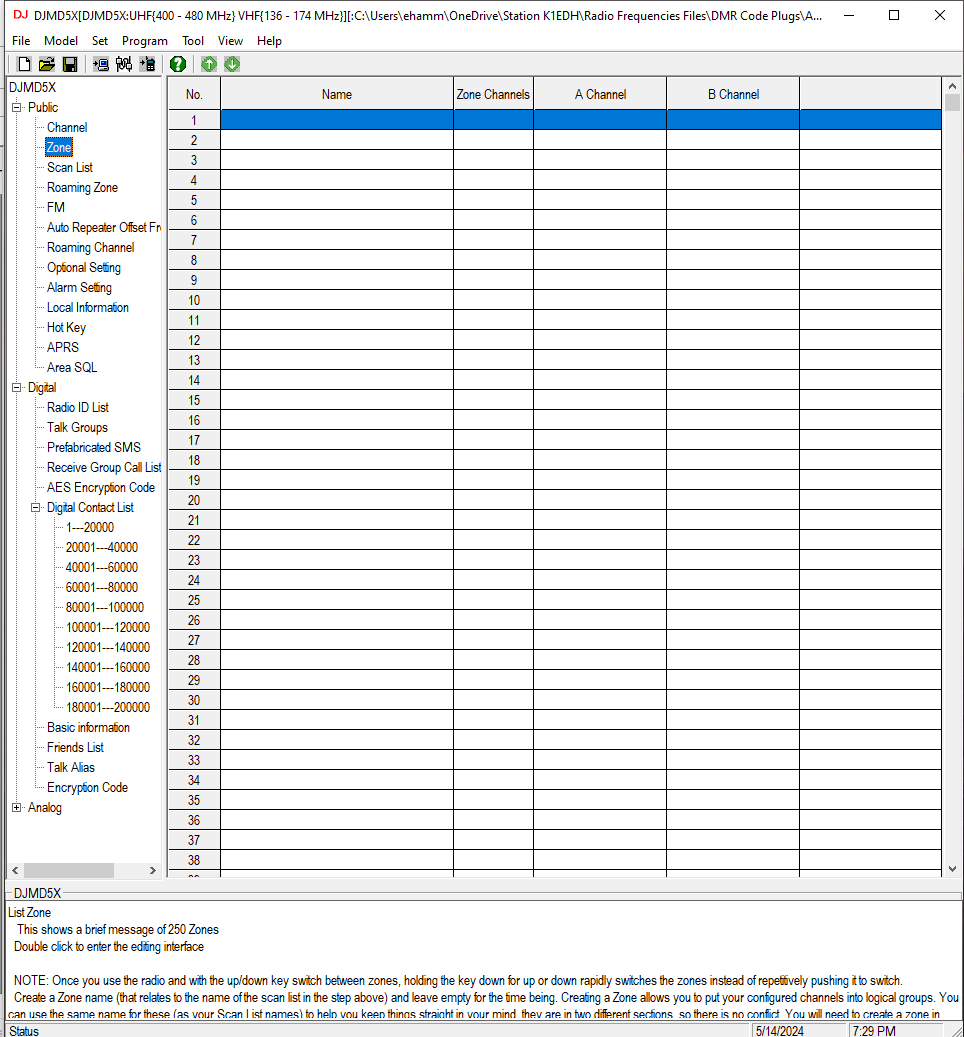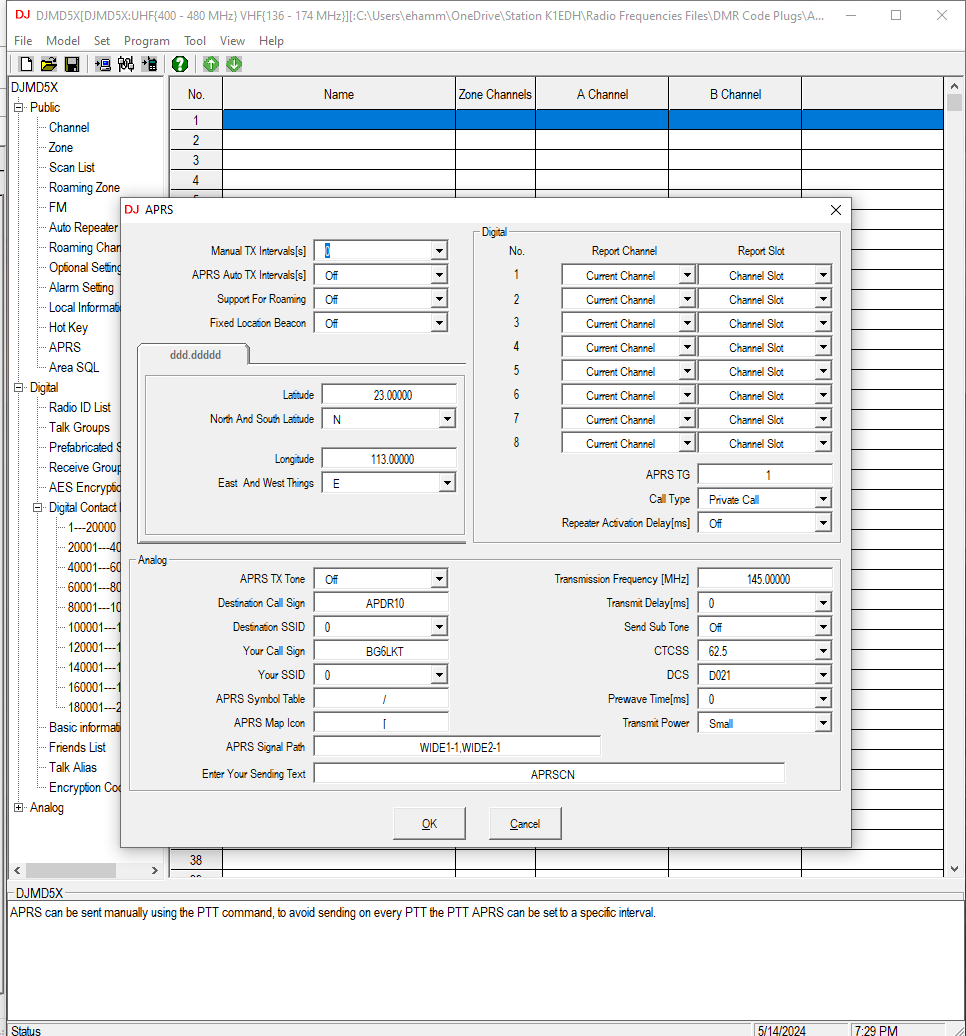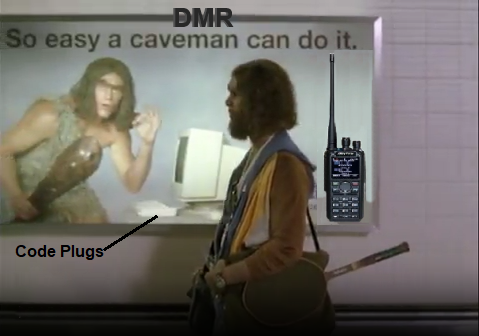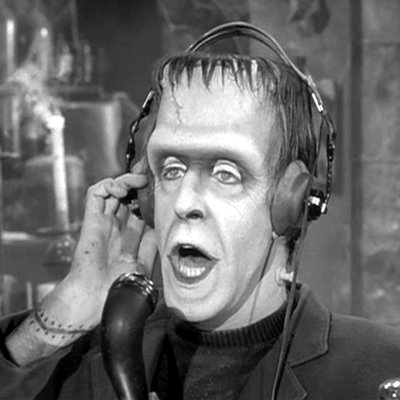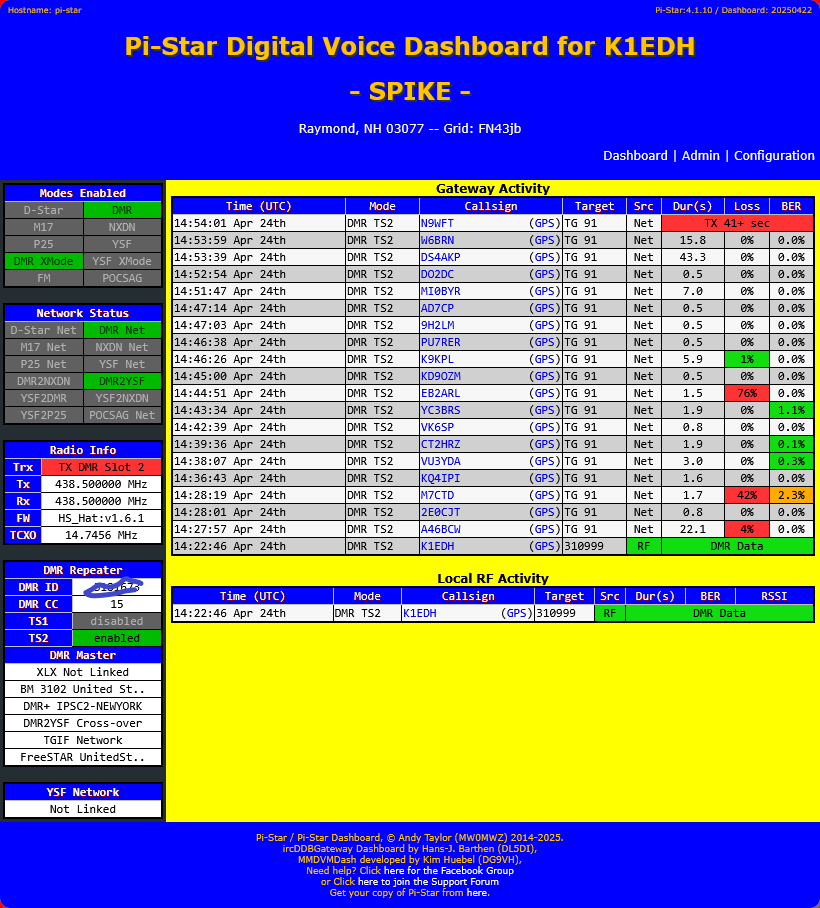
This page will help you with the programming with analog and digital radios. This page is only a guide, all radios are made differently and you should consult your manual with detailed instructions.
The first half of the page will deal with analog radio and the second half will deal with digital (DMR) radio. Each radio can be programmed keyboard direct (enter programming information from keyboard) or you can use what is called a Customer Programming Software, most commonly known as CPS.
Many hams have their CPS's on their main computer (in their shack) and on a laptop or tablet so they can quickly program it (the radio) in the field. I recommend keeping a CPS on a shack PC and also a laptop and / or tablet for field operations.
Most radios now can be programmed by blue tooth by simply getting a dongle to plug into your radio like you do with the programming cable, and connect that with your PC or phone. Using the phone in the field is the newest way so you don't have to carry around a laptop.
One of the main CPS for analog radio is a program called CHIRP. It will work with a number of radios, you can see if your radio is compatible with CHIRP here.Some radios use a different driver then your radio. You might see use XXXX, where XXXX is the other driver. Chirp can be used on a Widows, Mac OS or Linux system.
You can get CHIRP by getting the CHIRP-next or the CHIRP-legacy version.
 |
 |
 |

Not all radios are compatible with CHIRP and sometimes you will need to use a different driver withing CHIRP for your radio due to that at the time CHIRP doesn't have a driver for your radio.
at times, if CHIRP does not have a driver, you will need to use the driver or look for the driver for your radio, usually on the manufacturers website.
Here is a screen shot of CHIRP:
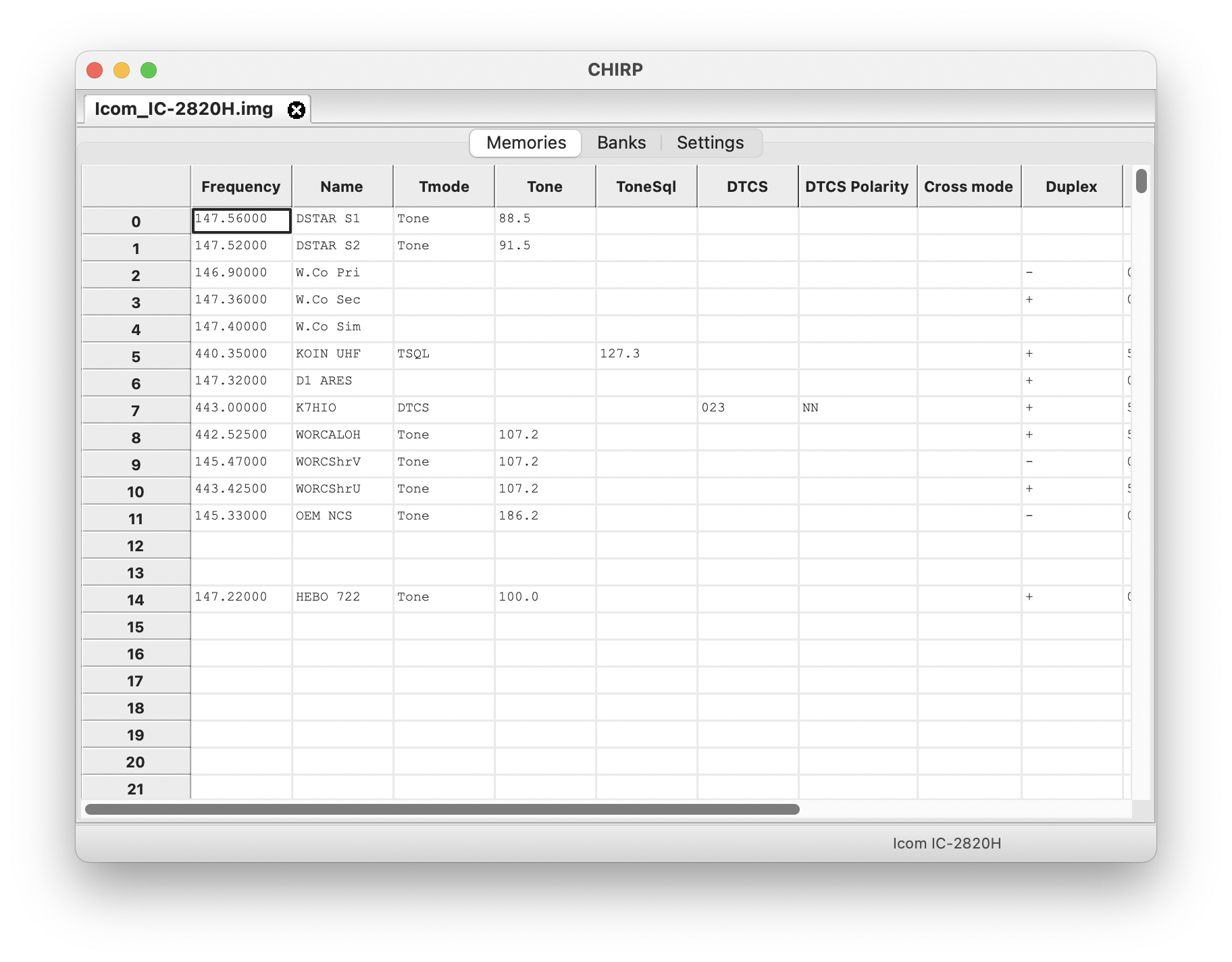
While using CHIRP, you can program your radio in one of two ways:
| You can select the repeaters from: Radio > Query Source > RepeaterBook inside CHIRP and let CHIRP enter the required information needed. |
| You can also enter the information, which is the frequency, PL tone and offset yourself. |
You should let the software put in all the required information. This will prevent any mistypes that will prevent you from accessing a repeater.
If you are putting in a simplex frequency, you do not need a DCS / CTCSS or PL tone and offset. The only time you may want to use a DCS or CTCSS tone is to siklence your radios so you don't hear other chatter on the frequency you are using.
Sites you may use to get frequencies are:
